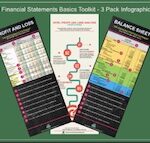Market Share Metric - Are You Missing this Critical Metric in Your Revenue Management?
Market Share is a metric every business enterprise swears by.
To consistently have a good share of the market pie is a hotelier’s dream.
All this excitement on market share analysis is fine.
However, in the process, hoteliers often completely miss an even more critical metric.
What?
Something more important you say?
Indeed!
Grab this EXCEL Spreadsheet
Don’t miss our 5 Killer Hotel KPIs Dashboard
Get this exclusive Excel Template that you can customize to create your own 5 Killer Hotel KPIs Dashboard
What I am about to reveal is really what makes market share relevant.
You are giving me that disbelieving look.
Let me clarify.
I will lay out a case for a metric which is one of the best measures of consistent revenue management success.
Let’s go.
This blog post will cover:
Market Share - The Elixir Coveted by All
The hospitality industry is indeed a unique industry.
On the one hand it is a seasonal business.
On the other, it is a business whose hotel performance is based on what the competition is doing.
In other words, a hotel's performance is often measured in terms of how well it is doing in its market.
How is it positioning itself in the market it operates in?
Or how well it is able to carve out a share of the pie.
Market Share is one of the most powerful KPIs in the hospitality industry.
It is a KPI that can be measured in multiple ways.
For example, you can have:
- Market Share Index
- Revenue Growth Index
- RevPAR Index
and so on.
How do you get to measure market share in the first place?
Market Share begins with a concept called the Competitive Set.
What is a Competitive Set?
Every hotel of whatever type, size and location is essentially operating in a given market.
The market consists of all the hotels which are operating in that location and around.
However, it will be impossible to include all the hotels in a market share calculation.
So, the first thing to be determined is: who are the hotel's direct competitors?
Your Direct Competitors in Market Share
Direct Competitors are those hotels which answer an important question:
Which hotels are competing for the same or similar type of customer?
Or which hotels can actually take away business from your hotel?
The common method of determining Direct Competitors for a hotel takes a two pronged approach:
- hotels based on Location and
- those based on Concept.
Location based Direct Competitors is straight forward.
Those hotels:
- within a certain radius and
- which can take away business from your hotel
are included in this category.
Concept based Direct Competitors is a bit more complex.
Those hotels whether within a certain radius or not but:
- which operate a similar concept (determined by different criterion) and
- which can take away business from your hotel
are included in this category.
Most times, it is a mix of location and concept that determines Direct Competitors.
It is important to understand that setting up Direct Competitors is not a one time task.
Can Direct Competitors Change?
Although that does not change often in the normal course, market changes may dictate:
- inclusion of a new player or
- removal of an existing player
from the Direct Competitor list.
A caveat here!
It is crucial to get your Direct Competitors list right the first time.
Say, you do not have an accurate depiction of who can take away your business.
You will constantly measure yourself with hotels who may not be able to take away business from you.
It can hurt your business greatly over time.
And have a negative impact on your share of the pie in the market itself.
We have understood broadly how market share is arrived at.
However, it is a means to an end not the end itself.
Let me clarify.
Before that, we need to understand one key concept I mentioned in my introduction.
And that is Fair Share.
Fair Share - a Misunderstood Metric
We saw how hotel performances are benchmarked against their competitive sets..
In this process, one measure that needs explanation is Fair Share.
The formula is more commonly known than the fair share.
However, one of the first steps in market share calculation is understanding your hotel’s Fair Share
For example:
In a month, if hotel A rooms available is 300, and the market competitive set rooms available is 3,000 rooms, then hotel A’s Fair Share is 10%.
Fair Share is the percentage of a hotel’s rooms available compared to the market competitive set it operates in.
It represents Supply.
Fair Share is calculated as follows:
Fair Share Formula
Hotel Rooms Available/Competitive Set Rooms Available X100
So, why is fair share so critical?
Well, this is because fair share brings in the supply element.
It calculates what the revenue capability of the hotel is versus the competitive set based on rooms available supply.
We will shortly see why this is so important.
Market Share - Not the Ultimate Destination?
Weird as it sounds, market share may not be the ultimate destination for hotels.
What do I mean by that?
Well, hotels need a comprehensive measure that tells them:
- how well their revenue or demand is
- based on their rooms available or supply
This concept is called market penetration.
Market Penetration is derived by the following formula:
Market Penetration Formula
Actual Market Share / Fair Share x 100
Let’s state market penetration in another simpler way.
Under and Over Penetration of Market
Say, hotel A is getting higher demand (revenue) than what it’s supply (rooms available) suggests.
Hotel A is out penetrating the market.
Say, hotel B is getting lower demand (revenue) than what it’s supply (rooms available) suggests.
Hotel A is under penetrating the market.
Market Share has more meaning based on market penetration (demand + supply) than merely demand.
If Fair Share represents Supply, then Market Share represents the Demand.
Example:
Say, in a month, if hotel A rooms occupied is 200, and the market competitive set is 1,500 rooms occupied, then the hotel A’s Market Share is 13.3%.
Market Share is the percentage of a hotel’s rooms occupied compared to the market competitive set it operates in.
Market Share is calculated as follows:
Formula
Hotel Rooms Occupied/Competitive Set Rooms Occupied X100
So, what do Fair and Market Share mean.
Implications of Fair and Market Share
They reflect where a hotel is positioned in its competitive set.
As we saw earlier, Competitive Set is the 4-5 hotels who are direct competitors.
In the above example, hotel A had Fair Share of 10% and Market Share of 13.3%.
This means that Hotel A is getting demand which is higher than what its supply (rooms available) suggests.
In other words, Hotel A’s Market Share is out penetrating the market which is an indication of superior performance.
Having a hotel out penetrating the market enhances revenue and ultimately profitability.
On the other hand, a hotel which is under penetrating the market is a owner’s nightmare.
So, what is the moral of the story?
The moral is that market penetration is a better indicator than just market share.
It balances supply as well as demand factors.
What about your hotel?
How are you re-thinking your hotel revenue management strategy?
Do you know your hotel fair share?
Are you out or under penetrating your market?
Comment below, I will be keen on knowing what your plan of action will be.
Want to learn the exact steps to identify top revenue sources of hotel toward a higher market share?
Get the Ultimate Guide below:
9 Step Ultimate Guide - How to Identify Top Hotel Revenue Sources
Related Posts
11





